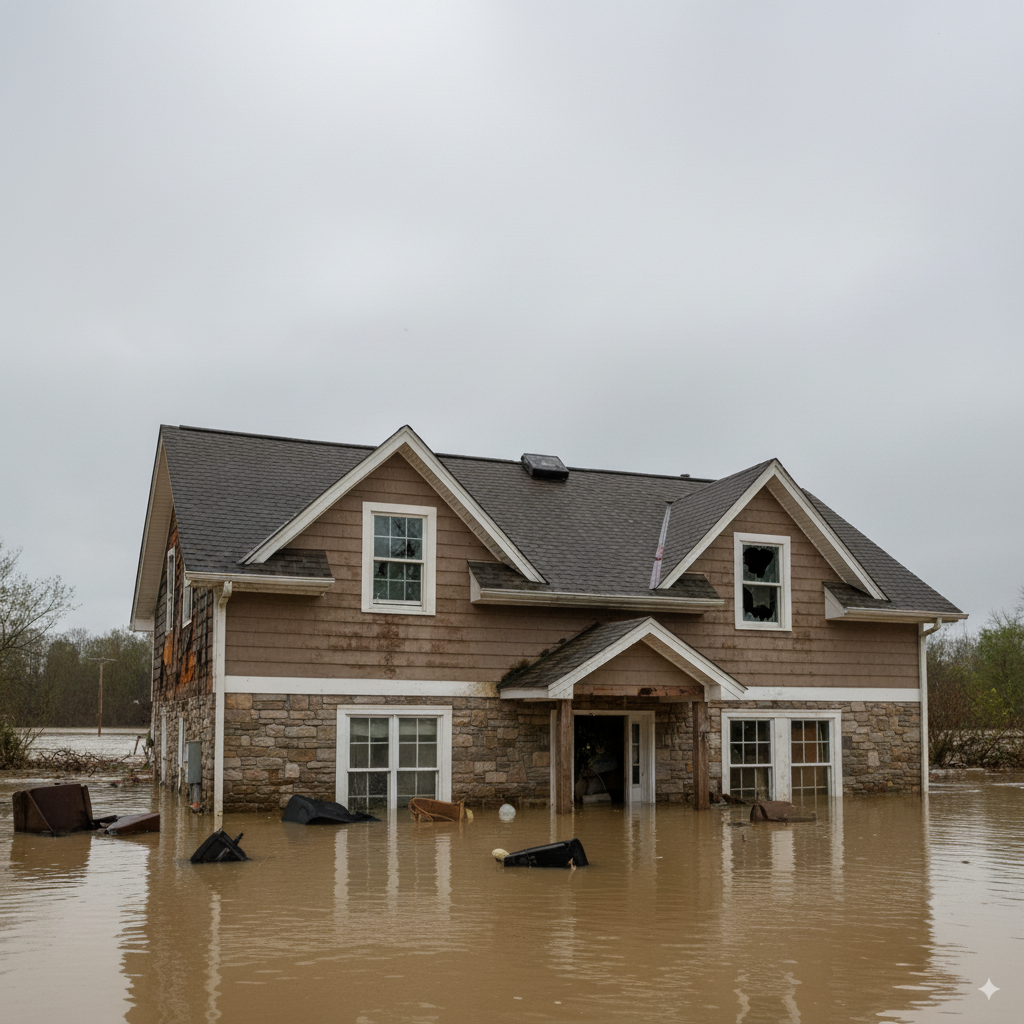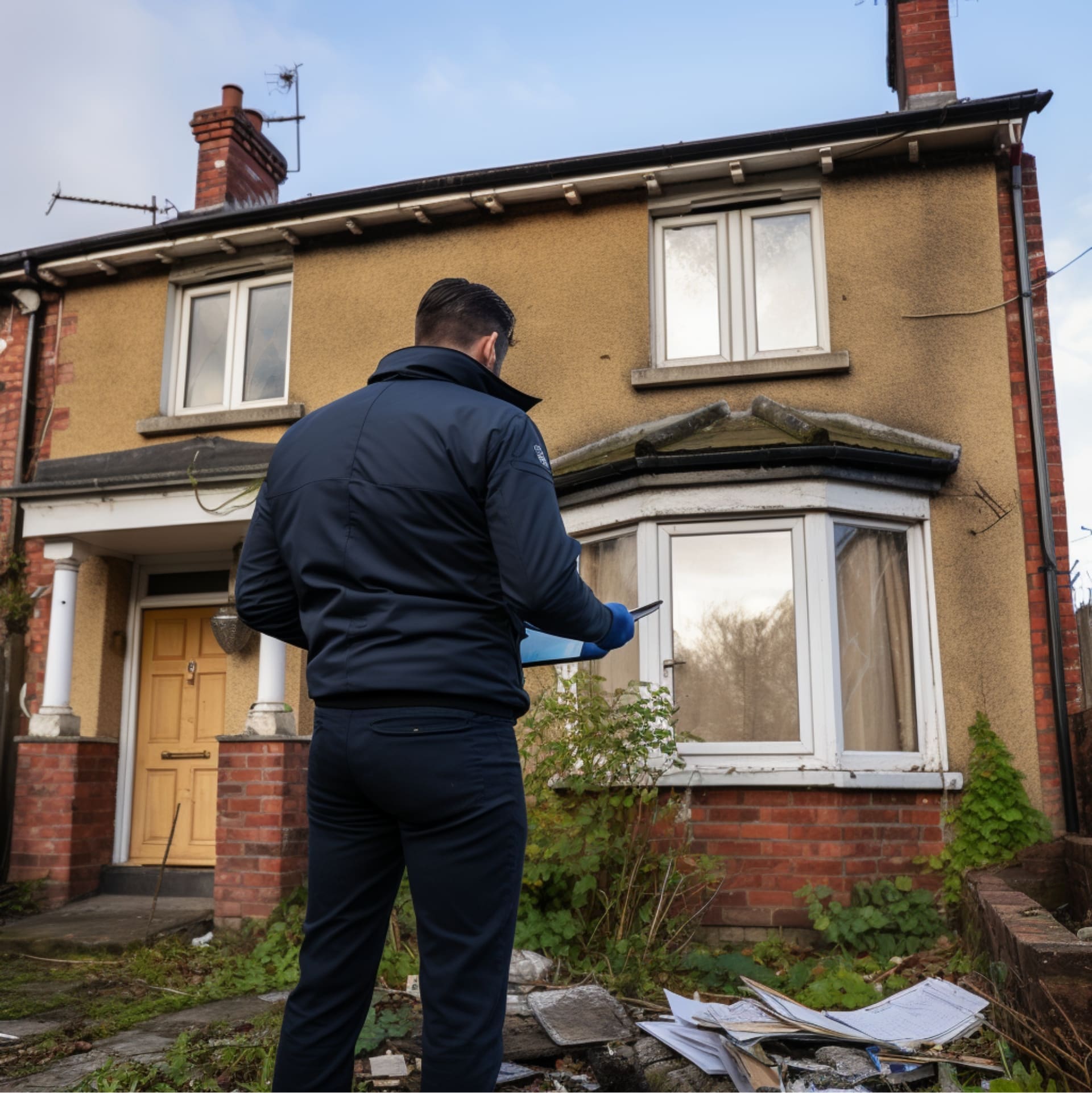You walk into your kitchen, and your socks are soaking. Water everywhere. Your washing machine has decided to flood your house whilst you were sleeping.
Now what?
If you’ve never made a water damage insurance claim before, you’re about to discover that insurance companies don’t make it easy. They’ll use terms you don’t understand, ask for evidence you didn’t think to collect, and find reasons to pay you as little as possible.
But here’s what they don’t want you to know: most water damage claims should be approved if you know what you’re doing. This guide shows you exactly how to handle your water leak insurance claim from the moment you discover the problem.
What Water Damage Insurance Claims Actually Covers

Your home insurance will cover sudden water damage from things like burst pipes, appliance failures, and storm damage to your roof. The key word is “sudden” because insurance companies love to argue about whether your water leak was an unexpected accident or something that’s been brewing for months.
They’ll pay out when your dishwasher suddenly starts leaking all over your kitchen floor or when a pipe bursts because of freezing weather. Storm damage that lets water into your house through damaged windows or roofing also typically gets covered, assuming your roof was in decent condition to start with.
What they won’t cover is that slow drip you’ve been ignoring for six months. Insurance companies call this “gradual damage” and they’ll argue it’s a maintenance issue, not an insurable event. They also won’t cover flood water coming from outside your house – rivers overflowing, heavy rain overwhelming drains, or groundwater seeping up through your floors all need separate flood insurance.
If you turned off your heating and went on holiday, then came back to burst pipes, most insurers will tell you that’s your own fault for not taking reasonable precautions. Same goes for general wear and tear like worn pipe joints or blocked gutters that cause water to back up into your house.
First 30 Minutes: What to Do When You Discover Water Damage

The moment you spot water damage, your priority is stopping more water from causing additional problems. Find your stopcock – it’s usually under the kitchen sink, in your downstairs loo, or by your front door – and turn off the water supply completely. If the leak is from an appliance, unplug it and turn off its water connection too.
Here’s something most people don’t think to do: take a photo of the stopcock in the “off” position. It sounds silly, but this proves to your insurance company that you acted responsibly to prevent further damage.
Before you start cleaning up or moving anything, document everything exactly as you found it. Insurance companies are naturally suspicious, and they need to see the damage in its original state. Take photos of the whole flooded area from different angles, get close-ups of standing water, and photograph the source of the leak if you can see it. Include something with today’s date in some of your photos – a newspaper, your phone screen showing the time, anything that proves when this happened.
Only after you’ve documented everything should you start damage control. Move belongings to safety, soak up standing water with towels or a wet vacuum, and get fans running to start drying things out. The insurance company expects you to prevent further damage, but they also need evidence of how bad things were initially.
Call your insurance company within 24 hours if possible. Have your policy number ready and stick to the facts about when you found the water damage, what caused it, and what you’ve done so far. Don’t start speculating about underlying causes or how long you think it might have been going on.
How to Talk to Insurance Companies Without Sabotaging Your Claim
Insurance companies listen for specific phrases, and using the wrong words can seriously damage your claim before it even gets started. Never say “flooding” when describing water damage from internal sources like pipes or appliances – say “water damage from appliance failure” or “water damage from plumbing failure” instead.
When you’re explaining what happened, say “I discovered water damage” rather than “it’s been leaking for a while.” If you’re not certain about the cause, say “the water appears to be coming from” rather than “I think it’s from.” These might seem like small differences, but they matter to insurance companies who are looking for reasons to classify your damage as gradual rather than sudden.
They’ll ask tricky questions designed to catch you out. When they ask “How long has this been going on?” focus your answer on when you first noticed the problem, not when you think the underlying issue might have started. If they ask whether you’ve had problems in this area before, be honest but specific: “I had a plumber fix an unrelated drip last year, but this water damage is completely different and in a different location.”
What Actually Happens During the Claims Process

Your insurance company will send a loss adjuster to assess the damage, usually within a few days of you reporting the claim. Before they arrive, clean up standing water and obvious debris, but keep damaged items so they can see them. Organise your photos and make a list of everything that’s been damaged with rough replacement values.During their visit, be present for the whole inspection and point out all the damage, even things that seem minor. Ask questions if you don’t understand what they’re doing or noting down. Take your own photos of areas they’re examining – this isn’t because you don’t trust them, but because having your own record helps if there are disagreements later.
Don’t feel pressured to sign anything on the spot. Tell them you need time to review their assessment properly. Get their contact details and your claim reference number before they leave.
After the assessment, you’ll need repair estimates from builders or restoration companies. Get at least three quotes, and make sure they’re detailed rather than just giving you a total figure. Good estimates break down materials, labour costs, timeframes, and whether any structural work is needed.
The settlement offer that follows is often lower than you expected. This isn’t necessarily your insurance company trying to rip you off – it’s just how the system works. Review it carefully to make sure it covers all damaged items and realistic repair costs. If it seems too low, you can negotiate by sending evidence of higher repair costs or items they’ve missed.
Common Mistakes That Destroy Claims
Waiting too long to report water damage makes insurance companies suspicious about whether the damage was really sudden. Report it within 24 hours if possible, or at least within a few days if you discovered it over a weekend.
Poor documentation kills more claims than almost anything else. Blurry photos, missing areas of damage, or no pictures of the original state before cleanup all make adjusters doubt your story. Take more photos than you think you need.
Don’t admit fault when there isn’t any. Avoid saying things like “I should have spotted this earlier” or “I probably should have maintained it better.” Stick to describing what happened without editorialising about what you could have done differently.
Keep damaged items until your claim is completely settled. If you must dispose of things for health reasons (like soaked carpets that are developing mould), photograph them thoroughly first and check with your insurer before throwing anything away.
For significant damage, get written reports from plumbers, builders, or restoration specialists. These professional assessments carry much more weight with insurance companies than your own observations about what went wrong.
Finally, don’t automatically accept the first settlement offer. It’s normal to negotiate, especially if you have evidence that their initial assessment missed things or undervalued repairs.
When Your Water Damage Claim Gets Rejected
Insurance companies reject water damage claims for predictable reasons. They’ll often claim damage was “gradual” rather than sudden, arguing it’s a maintenance issue you should have prevented. Fight this by providing evidence that the damage was unexpected – photos showing it was sudden, plumber reports confirming equipment failure, or witness statements about when the problem first appeared.
Sometimes they’ll argue the damage is a “pre-existing condition” that existed before your policy started. Counter this with evidence about when the damage actually occurred and documentation showing your property was in good condition when you took out the policy.
Occasionally adjusters get coverage decisions wrong, claiming something isn’t covered when it actually is. This is worth checking your policy documents carefully and challenging if you think they’ve made an error.
If your claim gets rejected, get the decision in writing with specific reasons. Address each point they’ve raised with additional evidence, and consider hiring a loss assessor to argue your case professionally. Most appeals succeed if you have good evidence, so don’t give up after an initial rejection.
Getting Professional Help with Complex Claims

Loss assessors work for you rather than the insurance company, and they typically charge 10 to 15 percent of your final settlement. This might be worth paying for large claims over £10,000, complex situations with multiple possible causes, or when your insurer is being particularly difficult to deal with.
Restoration companies can sometimes handle repairs and deal with insurance companies directly through “direct billing” arrangements where they get paid straight from your insurer. This can simplify the process significantly if you find a reputable company that offers this service.
Timeline Expectations for Water Damage Claims
Simple claims with clear causes and good documentation usually resolve within a month. You’ll typically have an adjuster visit within the first week, receive an initial settlement offer by week two or three, and complete negotiations by week four.
Complex claims involving disputed causes or significant structural damage can take several months to resolve. Expect the first month to involve initial assessments and investigations, months two and three for additional evidence gathering and expert reports, and months four to six for final negotiations.
Watch out for red flags that suggest your claim is getting stuck: no contact from your insurer for more than two weeks, excessive requests for additional information, adjusters repeatedly cancelling appointments, or settlement offers that seem unreasonably low compared to your repair estimates.
The Reality of Insurance Claims

Most legitimate water damage claims do get approved eventually, but the process isn’t designed to be quick or easy. Insurance companies will test your claim by asking detailed questions, requesting extensive documentation, and sometimes making low initial offers.
This isn’t necessarily because they’re trying to avoid paying – it’s because they deal with fraudulent claims regularly and they need to verify that your damage is genuine and covered by your policy. Understanding this helps you work with the system rather than against it.
If you’re currently dealing with water damage, focus on stopping further damage immediately, documenting everything thoroughly, and reporting the claim within 24 hours. Don’t panic if the initial settlement offer seems low – most are negotiable if you have good evidence to support higher repair costs.
The key is being organised, persistent, and honest throughout the process. Keep detailed records of every conversation, photograph everything multiple times, and don’t be afraid to ask questions when you don’t understand something. Most claims do get resolved fairly if you follow the right steps and stick with the process.
This is general guidance about water damage insurance claims. For advice specific to your situation, speak to your insurance broker or a qualified loss assessor.

